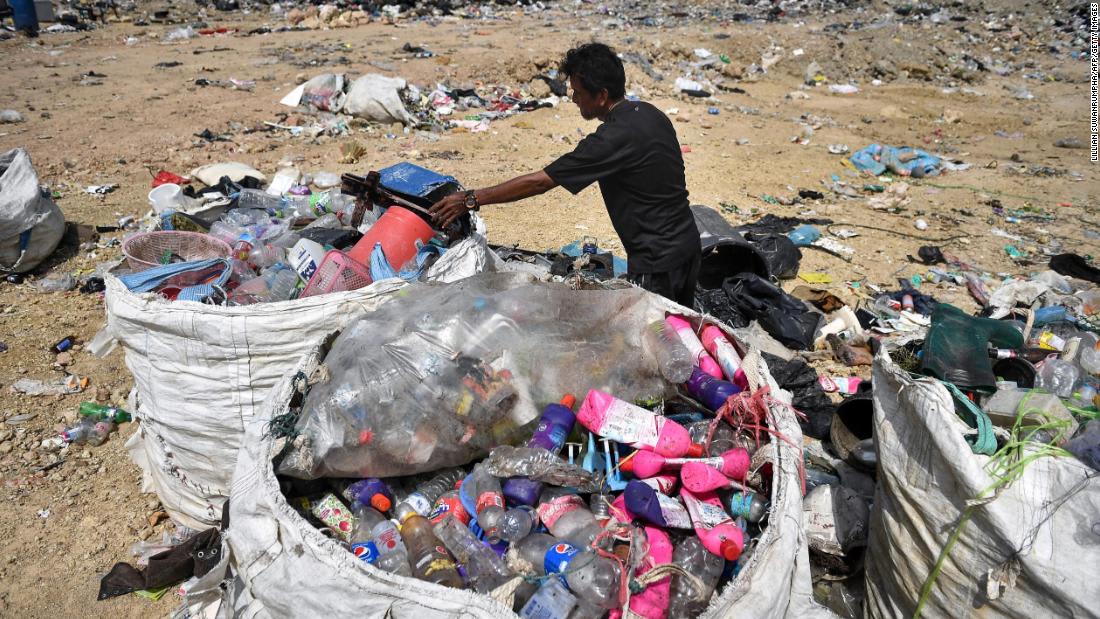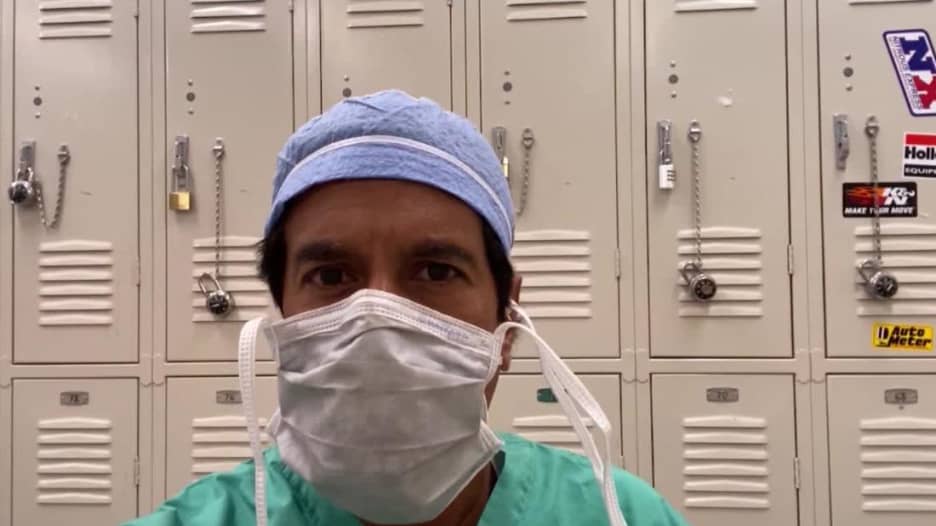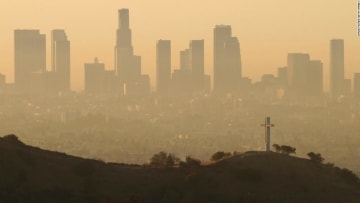دبي، الإمارات العربية المتحدة (CNN) -- ابتكر العلماء "إنزيماً فائقاً" جديداً يحلل البلاستيك بمعدل أسرع بست أضعاف من الإنزيم السابق.
وقام فريق من الباحثين بإعادة هندسة إنزيم آكل البلاستيك المسمى "PETase"، وذلك من خلال دمج هذا الإنزيم مع إنزيم ثان لتسريع العملية، وفقًا لبيان صحفي صادر عن جامعة بورتسموث في بريطانيا.
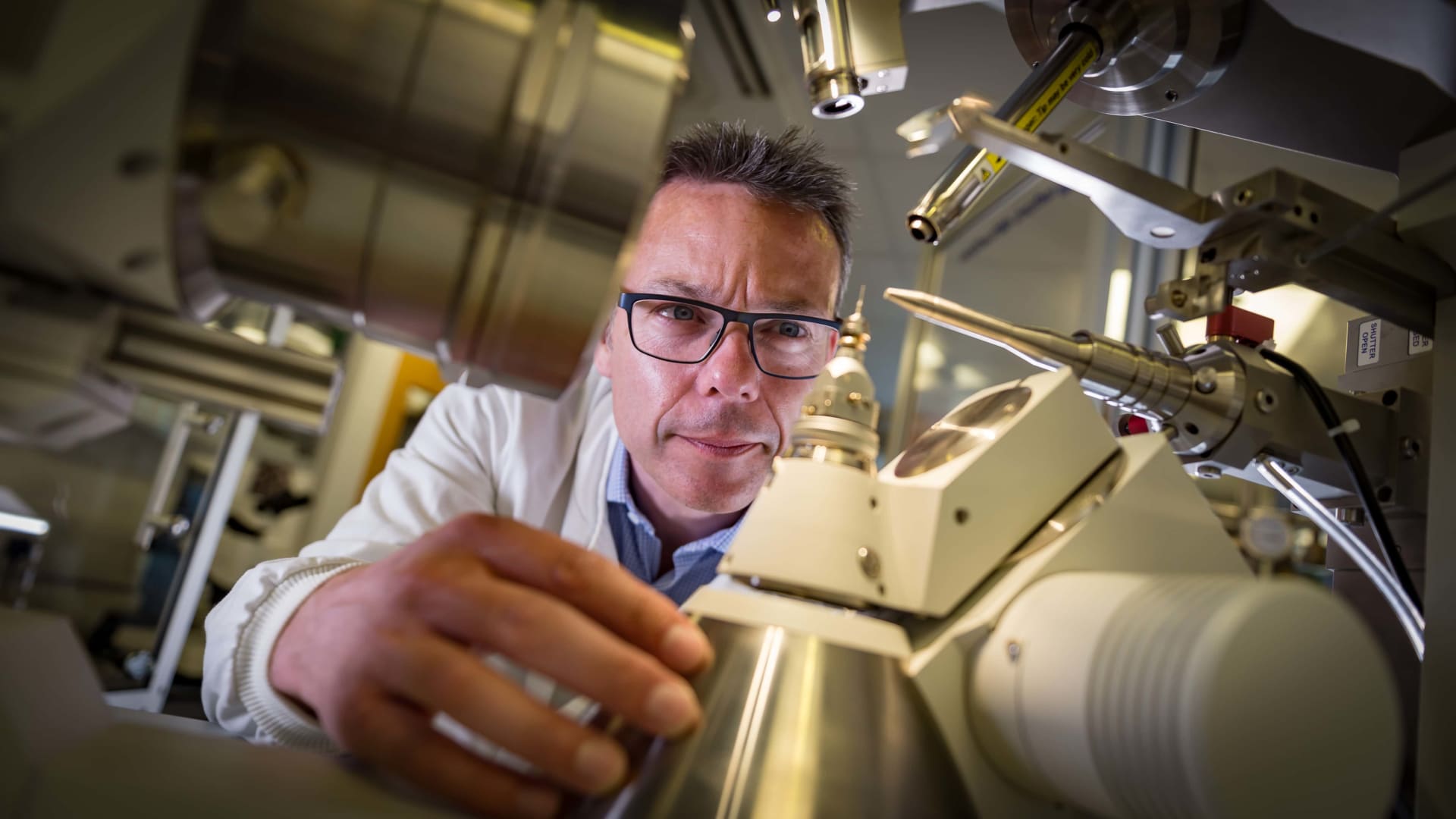
ويمكن أن يكون للإنزيم الفائق تداعيات كبيرة على إعادة تدوير مادة البولي إيثيلين تيريفثاليت "PET"، وهي شائعة الاسخدام في الزجاجات البلاستكية لتعبئة المشروبات، والسجاد، والملابس ذات الاستخدام الواحد.
وتستغرق مادة البولي إيثيلين تيريفثاليت "PET" مئات السنين حتى تتحلل في البيئة. يمكن لإنزيم "PETase" تفكيكها إلى كتل بنائية في غضون أيام قليلة.
وقال جون ماكجيهان، المؤلف المشارك الرئيسي ومدير مركز ابتكار الإنزيمات في جامعة بورتسموث، لـ CNN إن هذا التطور الأخير يمثل خطوة كبيرة نحو استخدام الإنزيمات لإعادة تدوير البلاستيك وتقليل التلوث البلاستيكي.
وأشار ماكجيهان إلى أنهم فوجئوا بنجاح التجربة على هذا النحو، مؤكداً على أن العملية "لا تزال بطيئة جداً"، بحيث لا يمكن استخدامها تجارياً بعد.
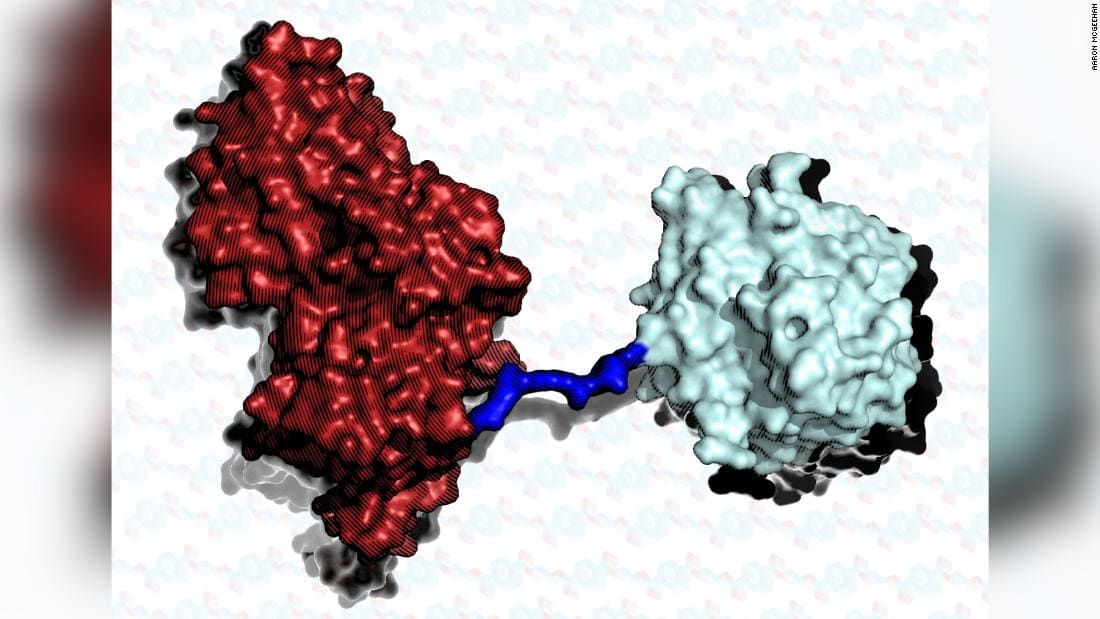
وأوضح ماكجيهان لـ CNN أن الباحثين تلقوا تمويلاً لإجراء المزيد من التجارب، وقد تعني التطورات الناجحة أنه يمكن إعادة تدوير مادة "PET" الحالية بدلاً من استخدام الوقود الأحفوري لإنتاج المزيد من البلاستيك الجديد.
وأضاف ماكجيهان: "نحن نتطلع إلى توفير كبير في الطاقة".
ويجمع الإنزيم الفائق بين الإنزيمين "PETase" و"MHETase"، ووجد العلماء أن المزيج من الاثنين يفكك مادة "PET" أسرع مرتين من إنزيم "PETase" بمفرده، بينما يؤدي ربط الإنزيمين إلى زيادة سرعة العملية بمقدار ثلاثة أضعاف أخرى.
واستخدم ماكجيهان جهاز "Diamond Light Source"، وهو جهاز يستخدم الأشعة السينية، للتمكن من رؤية الذرات الفردية ورسم خريطة للبنية الجزيئية للإنزيم "MHETase".
وتمكن الباحثون بعد ذلك من هندسة الإنزيم الفائق الجديد عن طريق ربط الإنزمين معاً بشكل فعال لإنشاء سلسلة واحدة طويلة.
وتُستخدم هذه التقنية بشكل شائع في صناعة الوقود الحيوي، والتي تستخدم الإنزيمات لتحطيم السليولاز، ويعتقد ماكجيهان أن هذه هي المرة الأولى التي يتم فيها دمج الإنزيمات من أجل تفكيك البلاستيك.
ونشرت الدراسة الكاملة يوم الاثنين في دورية وقائع الاكاديمية الوطنية للعلوم بالولايات المتحدة الامريكية.
ويعد التلوث البلاستيكي من أكثر القضايا البيئية إلحاحاً.
وتوقع أحدث تقريرصادر عن مؤسسة "Pew Charitable Trusts" أن حجم البلاستيك الذي يدخل المحيط يمكن أن يتضاعف ثلاث مرات تقريبًا إلى 29 مليون طن متري سنوياً بحلول عام 2040، أي ما يعادل 50 كيلوغراماً لكل متر من ساحل الكوكب.
وأشار التقرير إلى أنه "لا يوجد حل واحد" لهذه الأزمة، ولكن "استراتيجية إعادة التدوير الطموحة" يمكن أن تخفض نسبة التلوث البلاستيكي من 31 إلى 45%.
وتشمل الحلول الممكنة الأخرى دودة الشمع الصغيرة، التي يمكن أن تقضم البلاستيك، وحتى مادة البولي إيثيلين، وهو نوع بلاستيك شائع وغير قابل للتحلل الحيوي، ويسد حالياً مكب النفايات والبحار.
ويمكن أن تساهم أيضاً الديدان الطحلبية، وهي المرحلة اليرقية لخنفساء دودة الوجبة، في تفكيك البلاستيك، إذ يمكن لحوالي 3,000 إلى 4,000 من دودة الوجبة تحطيم كوب من الستايروفوم في غضون أسبوع تقريباً بفضل البكتيريا التي تعيش في أمعائها.

